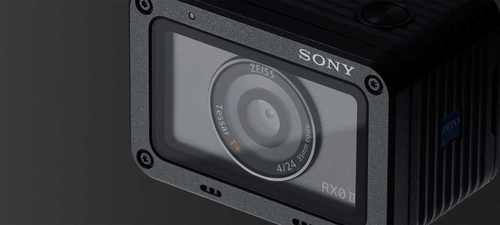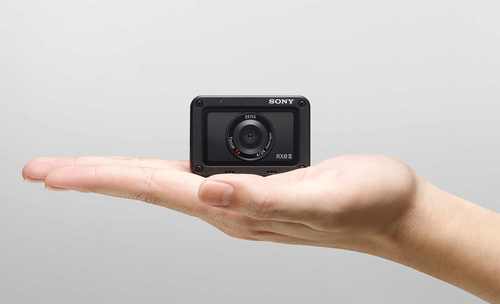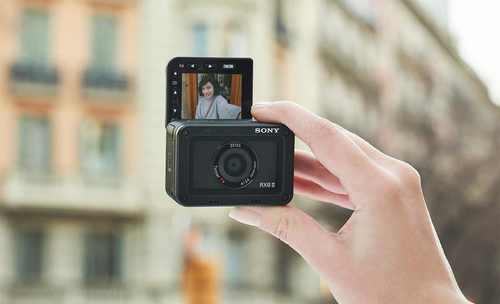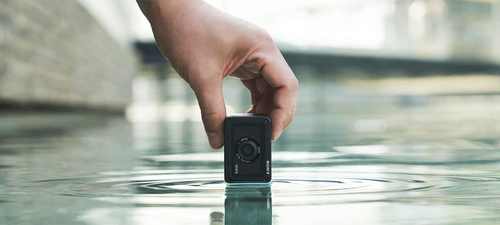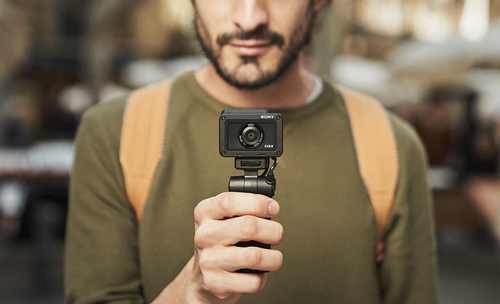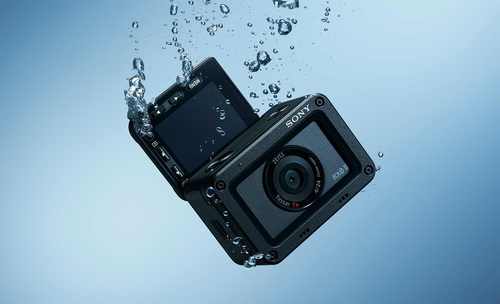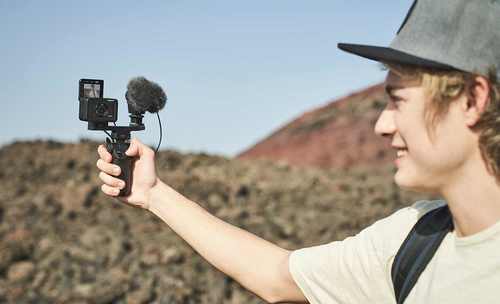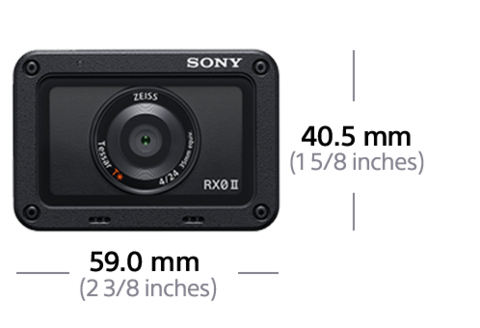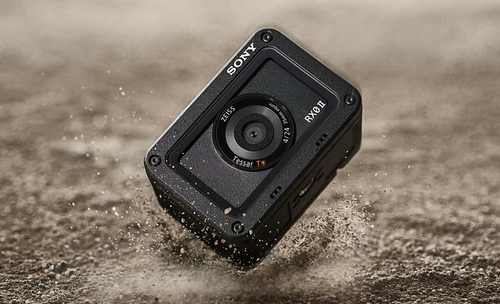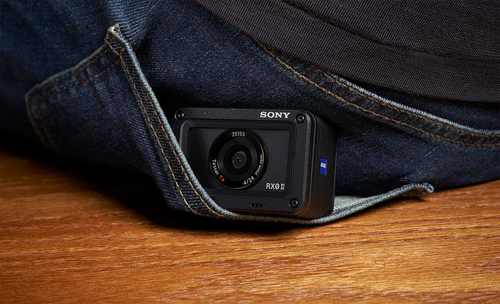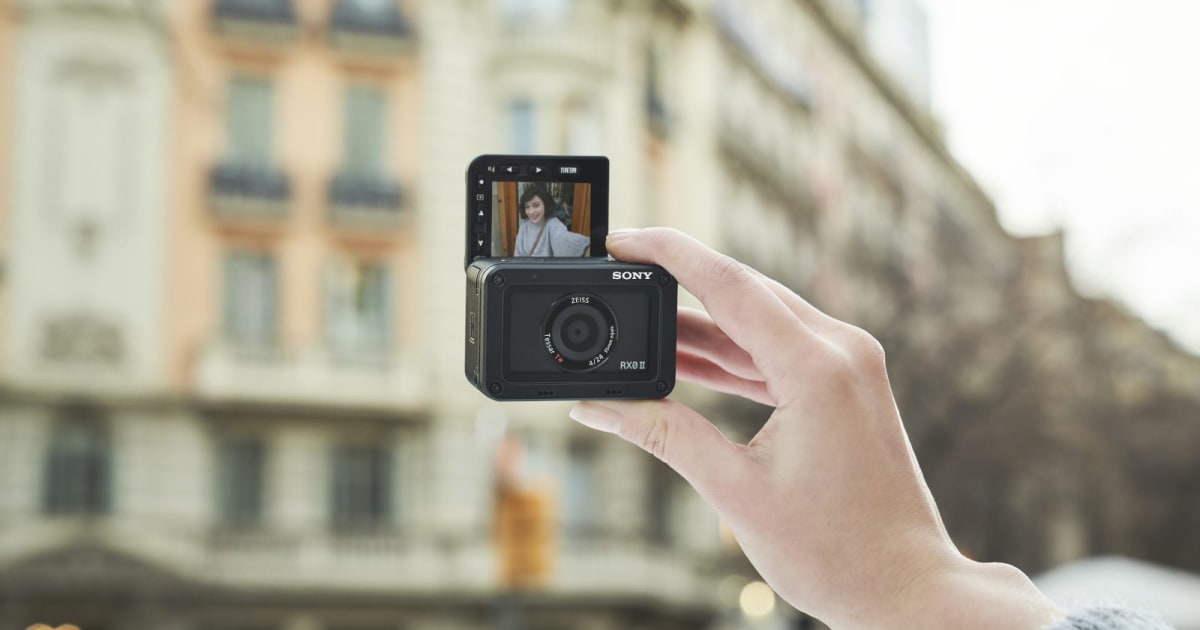The newly released RX0 II, however, can’t really be called much of a Go Pro clone anymore. With just a few minor tweaks to the familiar frame and some much-needed features update, it’s transformed itself just enough to help it differentiate itself from the rest of the market. It now occupies a space of its own between dedicated point-and-shoots and action cameras.
Build Quality
When it comes to build, It’s still very much in the action-camera territory. It’s a small 59 x 40.5 x 35 mm camera which makes it great for stowing inside your luggage and mounting on various sports equipment like a helmet. You can even mount it on some adapters specifically made for Go Pros.
However, in today’s world where gadgets tend to get smaller and slimmer every iteration, the RX0 II goes in a different direction. It got a bit thicker than the RX0. This is because Sony installed an articulating screen on it. It’s one of the most drastic differences between the RX0 and RX0II.
Quite honestly, it’s a feature that could probably flip the script for the RX0 line. For vloggers and adventure seekers, having the ability to see and frame your activities as you do them is a much-needed feature.
The action camera side of the RX0 II has a lot to do with its ruggedness. It can withstand up to 200 kgs of crushing force, up to 10 meters of being submerged, and up to 6.5-foot drops. It’s rated IP68 so it should be dust-proof as well.
Sensors
Sony doesn't categorize the RX0-line as action cameras. It's still very much a compact camera because of the high-quality sensors that they come equipped with. It has an unparalleled depth of field, low-light performance, and dynamic range at the same form-factor.
What the original RX0 was originally banking on was this image quality. It had the same sensor size as the RX100 Mk. 6, a favourite for the vlogging community. This meant that you can take higher quality videos and photos with something that had the same build quality and durability as a Go Pro.
Luckily, Sony didn’t abandon this philosophy with the RX0II. They still aim for better quality images by equipping it with a vlogging-grade sensor. Specifically, it has the 15-megapixel 1.0"-type Exmor RS® CMOS sensor. Coupled with the Zeiss Tessar T* Lens, and you’re sure to have great video and still photography image.
The RX0 II further distances itself from the action camera territory by not sporting a wide-angle lens. It has a fixed focal 24mm lens that’s about 74° wide. For comparison, the Go Pro has a 120° field of view. This further cement the RX0 II’s position between an action camera and a point-and-shoot.
I/O
It’s not only a heavy-hitter in the ultra-compact camera department. It’s a great video camera overall that has some features that even bigger cameras lack.
The microphone input, for example, is something that not a lot of action cameras or other point and shoots have. Out of Sony's stable, for example, the RX100 Mk. 6 doesn't have one. The Go Pro doesn’t have one as well. This is a massive win for the RX0 II because built-in microphones usually don’t do very well in busy environments.
Another vlogger pleasing feature would be the inclusion of the ¼-20 socket. This allows it to be mounted on tripods, monopods, and selfie sticks that vloggers need in order to capture themselves on camera.
This port is located in an input cluster right beside the small screen. Other than the mic input, It has a lot of useful things in there too such as the microSD slot, micro-USB, and a micro-HDMI.
Understandably, the tiny tilting screen is not touch-enabled. To navigate your way through it, you’re going to have to rely on physical buttons around it. The button offering is pretty standard. It comes with a review, back, forward, and record buttons situated around the screen. On top, there’s a power and shutter button.
Camera Features
One thing that the old model lacked was stabilization. Luckily, Sony listened and equipped the RX0 II with digital image stabilization. This isn’t something that’s going to thoroughly impress a camera aficionado but it’s nice that it’s there. It’s important to note though, that even slowly panning might result in a bit of a rolling shutter.
Another sign that Sony listened to their consumer base is that they equipped this RX0 II with the ability to shoot 4K internally. However, it can only shoot 4K at 30fps. These days, even dash cameras for can shoot 4K at 60fps so there’s definitely some missed opportunities for Sony here.
It also comes in with Sony's Eye AF. This means it locks into your subject's eyes when taking portrait photos or selfies. However, it lacks continuous autofocus for video taking. This is another compromise that some of its target markets might steer clear from. Hopefully, Sony can add this feature through a firmware update later on.
Final Thoughts
The RX0 can’t really be considered as a serious contender. It was a Go Pro clone that took high-quality images and videos. It was a philosophy that got a very few people excited.
Fortunately, Sony listens to its customers. That much is evident by the new features on the RX0 II's new set of features. It now has an articulating screen, slightly improved 4K-capabilities, and overall package which makes it a lot more compelling. It's gotten closer to becoming a great vlogger's camera.
It is by no means the perfect vlogging camera but as a secondary camera for getting difficult angles, it's probably one of the best in the market right now.

